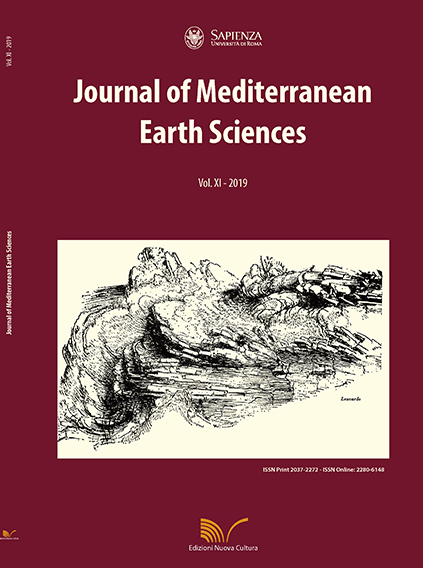P-T estimates from amphibole and plagioclase PAIRS in metadolerite dykes of the Frido Unit (southern Apennines-Italy) during the ocean-floor metamorphism
DOI:
https://doi.org/10.3304/JMES.2019.003Keywords:
amphiboles, plagioclases, metadolerite dykes, ophiolitic sequences, ocean-floor hydrothermal metamorphism, Frido Unit, Liguride accretionary wedge, southern Apennines.Abstract
Abstract
The metadolerite dykes from the Frido ophiolitic sequence reflect strain partitioning with textures evolving from magmatic intersertal/intergranular, blast-ophitic and incomplete metamorphic recrystallization.
Amphibole and plagioclase are the main minerals in these rocks. Amphibole composition reflects both bulk compositional and P–T changes. Different Ti, IVAl values between the brown and green amphiboles clearly indicate genetic conditions of amphiboles developed in ocean-floor hydrothermal metamorphic conditions.
The electron microprobe analysis showed that the assemblage developed during ocean-floor hydrothermal type metamorphism (M1) consists of two main amphibole varieties: a brown one, and green; instead during orogenic metamorphism (M2) developed a blue amphibole.
The magmatic plagioclase is anorthite (PL1) and the metamorphic plagioclase are oligoclase (PL2), albite (PL3). The estimated P–T conditions are in favour of their metamorphism under ocean-floor hydrothermal type. The variety of amphibole compositions and the plagioclase found in the metadolerite dykes offers useful constraints to reconstruction of the correlated environmental conditions providing new insights on the oceanic metamorphic evolution of this orogenic sector of southern Apennines.
Published
How to Cite
Issue
Section
License
The submission has not been previously published, nor is it before another journal for consideration (or an explanation has been provided in Comments to the Editor).


